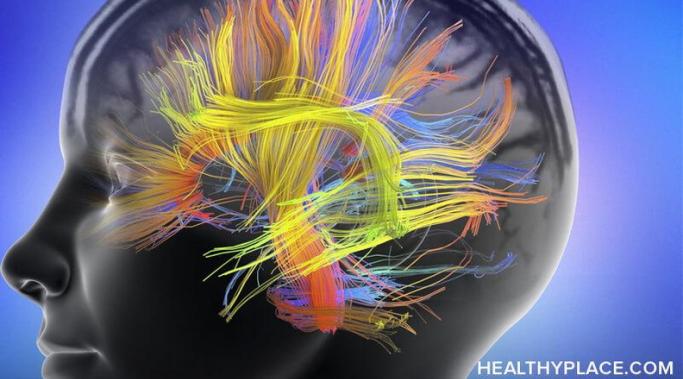The beginning of my PTSD recovery looked like this:
Force me to go to therapy for one hour, once a week.
I show up and expect the therapist to do all of the work.
For the rest of the week, I pretend there’s nothing else to do and just try to limp through the days coping with symptoms of PTSD.
Why did I pretend there was nothing else to do? Because if you’ve ever, for a second, struggled with the effects of trauma or PTSD, you know what it feels like to be sleep-deprived, depressed, emotionally volatile, powerless, hopeless and sometimes, just downright utterly despondent. In that state of mind, I often believed there was no way to save me. I was crazy and would remain so forever.
PTSD Treatments
A reader recently asked me a very important question. Speaking of her therapist, she asks "How do I know that what he is doing therapeutically is the correct thing?" This is a surprisingly complex question. I will point out the major issues to address in coming up with an answer, then describe my own preferred way of dealing with this question.
However, there are two aspects to consider here - your therapist's viewpoint, and yours. It is quite possible for your therapist to do the "correct" thing, but not to get the results you want. Because each of these considerations deserve careful thought, I will address my reader's question in two posts. This first one will consider how to think about your therapist. We must begin by asking: What determines "correct" for your therapist?
Previously, I proposed that trust of your therapist is necessary if you are to achieve the success you hope for when engaging their services (Therapy's First Obstacle: Trust My Therapist? No Way!). At the least, you hope for reduction of the undesirable trauma and/or PTSD symptoms which bring you to therapy in the first place. You should also hope to regain at least some of what you've lost because of the intrusion of these symptoms into your daily life. Working collaboratively and cooperatively on these important, challenging goals with your therapist is the only reasonable plan for you to adopt if you want therapy to work.
Living in the chaos of PTSD symptoms and post-trauma haze can make you very self-centered. Know how I know that? I used to be like that! It's hard to cope on the inside and still be sensitive to others on the outside. Heck, it's tough to be miserable and do anything that would make someone else happy.
One U.S. Marine + One Guitar = Big Impact
When was the last time you did something nice for someone else? Last week, on Changing Direction, I interviewed U.S. Marine, Markus Fox, about how his guitar and music helped his platoon during a particularly difficult night in Iraq. They had lost the first two casualties since their deployment and the platoon was very upset. Markus took out his guitar, sat on the back step of a truck and invited the other soldiers to pull up their stools while he played a tribute to their fallen brothers. The results of this simple, selfless act during a time of trauma were enormous.
Still, there are a couple of problems with the PTSD self-centered lifestyle. Let's take a look...
If you've survived a trauma you know that your mind records various experiences in images as vivid as a high-end digital camera. When I first started working as a PTSD coach one of my clients came in with a specific request: "I want to erase all of the memories associated with my trauma," she said.
Finding the right help in overcoming PTSD can be challenging. From a financial aspect it can consume your savings. I actually had to turn to family to help me shoulder the cost of years of treatment.
But what if you don’t have the financial resources for a full-on approach? Or, what if you do and still find it tough to get through the days between sessions?
Back in 2009, I went to the annual trauma conference in Boston hosted by Bessel van der Kolk. It was a fantastic conference with a slew of professionals presenting on various aspects of and treatments for PTSD.
One of the stars of the conference was Neurofeedback (NFB), a process that I didn't know very much about. Many of the presenters shared facts, statistics and applications for NFB and spoke about how effective it was in helping to reduce symptoms of posttraumatic stress.
Do you know what NFB is and how it works? Here's a quick overview...
Back in February, I wrote a post called "Are You Sensitizing Your Amygdala?", which was all about how your amygdala (the instinctual threat center of your brain) gets highly sensitized in PTSD and then finds and seeks threat constantly - even when there really isn't anything to feel threatened by. Recent advances in neuroscience have proven that while the amygdala changes to a sort of hyper-function in PTSD, it can change again in recovery.
You decide you want to heal from PTSD. You've had enough of living with high anxiety, nightmares, depression, emotional mood swings, the feeling that just stepping out of your house brings on an avalanche of overstimulation. So you pull up your bootstraps, tighten your belt, strap yourself in and take the plunge: You reach out for help, receive your diagnosis, educate yourself about treatment options, choose one, find the right practitioner, start your sessions and..... find yourself full of all kinds of contradictory feelings.
Last week, I wrote about how trauma affects children and what symptoms to look for in identifying a trauma reaction in a child. This week, I'm continuing the children and trauma/PTSD theme by examining treatment options.
As in my earlier post, this information comes from an expert in helping children with PTSD, my colleague Bill Krill, author of Gentling: A Practical Guide to Treating PTSD in Abused Children.









